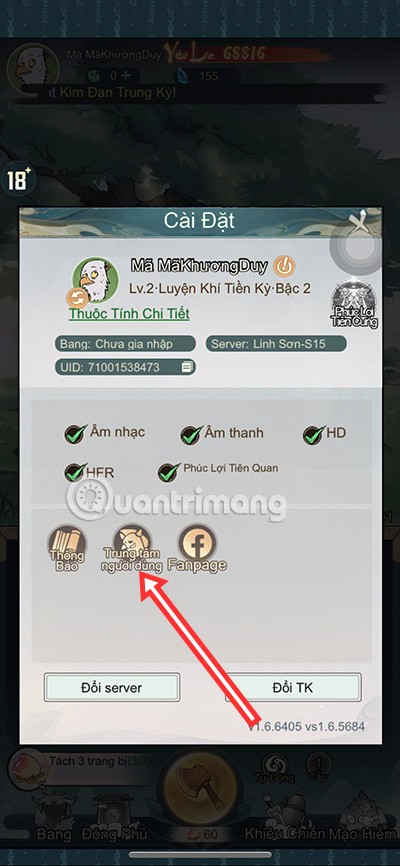The most commonly deficient nutrients in the diet

Diet is important to our health. Yet most of our meals are lacking in these six important nutrients.
From a young age, our parents taught us some basic knots to tie things. When we grow up, we learn more knots to serve personal purposes such as tying ropes to set up tents when traveling...
How many ways do you know to tie a knot? Do you know how to tie a knot that is both tight and easy to untie? If not, then refer to the article below of WebTech360 to learn some super easy and extremely tight ways to tie a knot, you can apply it in life to be able to tie things without worrying about falling. Please read along.
1. Double button
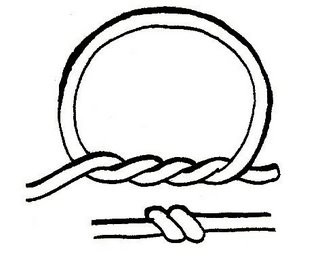
Tying a double knot is similar to tying a single knot, but it will be much stronger than a single knot.
2. Single seat knot or unfastened noose knot (bowline)
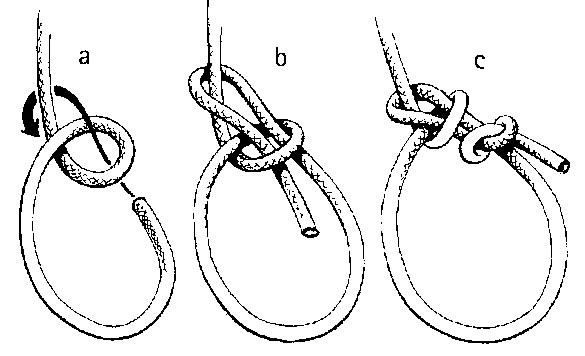
This method of tying creates a fixed loop, and is often used when tying a rope around a person or animal without fear of the loop slipping or tightening around the neck.
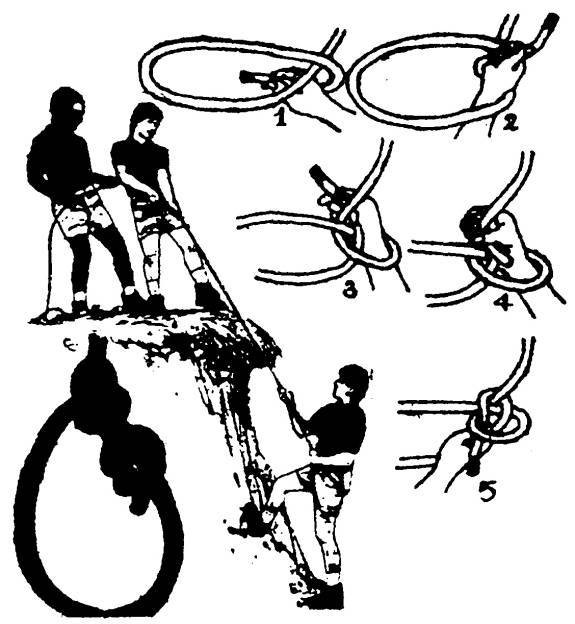
This method is often applied when climbing mountains, working at heights or throwing to people about to drown in water...
Simple noose knot:
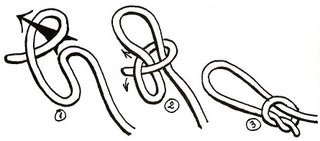
African Noose:
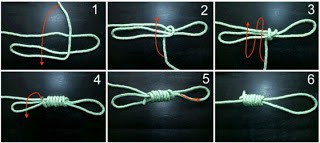
3. Overhand Knot
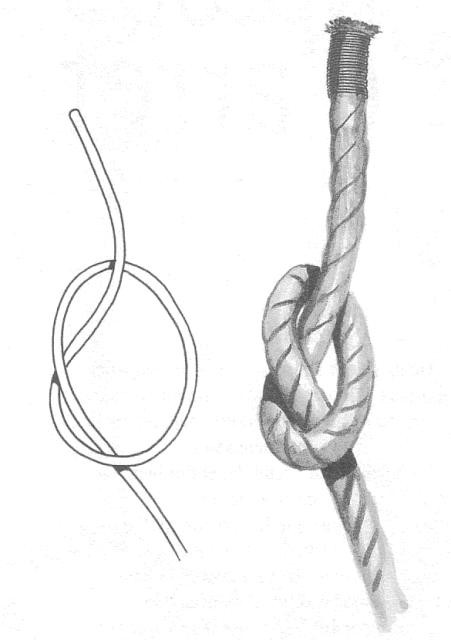
This knot is very popular with many of us. The advantage of a single knot is that it is quite tight, but the disadvantage of this method is that it is very difficult to untie. Therefore, you need to think about whether you need to untie the string before tightening the string.
4. Reef knot/square knot
Like the single knot, the flat knot is also very popular and simple. This knot is used to tie the two ends of a rope to fix something in the middle. This knot is also known as the thief knot or the cow head knot.
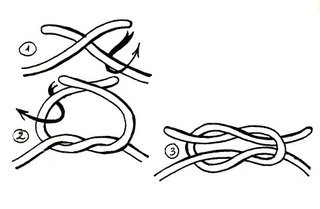
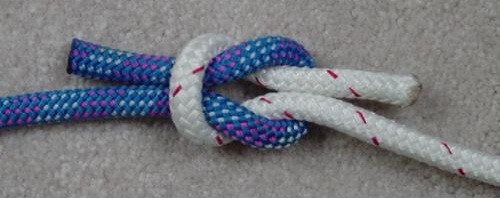
This tying method can be used to tie goods, tie shoes and end bandages for patients.
5. Figure-of-eight knot
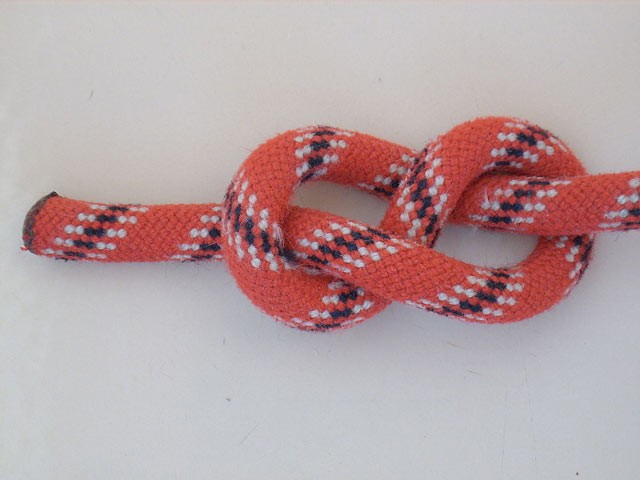
This method is often used by people to prevent the rope from slipping off equipment such as rope ties when sailing or climbing and making rope ladders.
6. Clove hitch
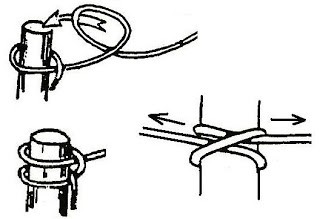
This method is often used when tying a boat rope to a stake on the shore or tying the ends of a tent (when camping). The fishing boat knot is also the starting knot for tree knots.
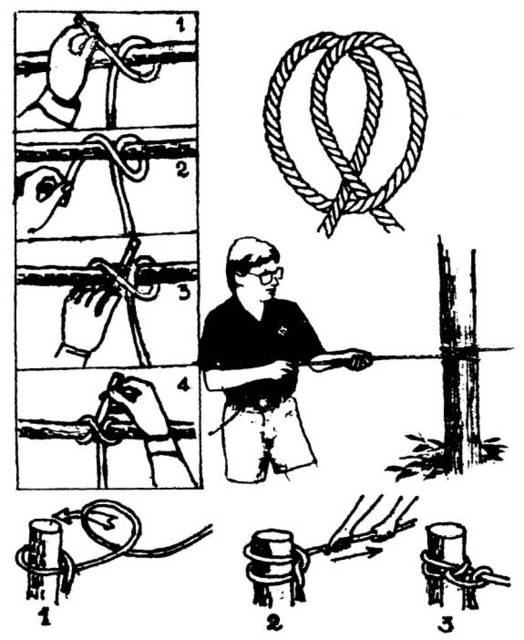
7. Lark's head (Cow hitch)
The lark knot or lark head knot, depending on the locality, has different names. This type of knot is often tied for hanging, especially hanging objects on a crossbar.
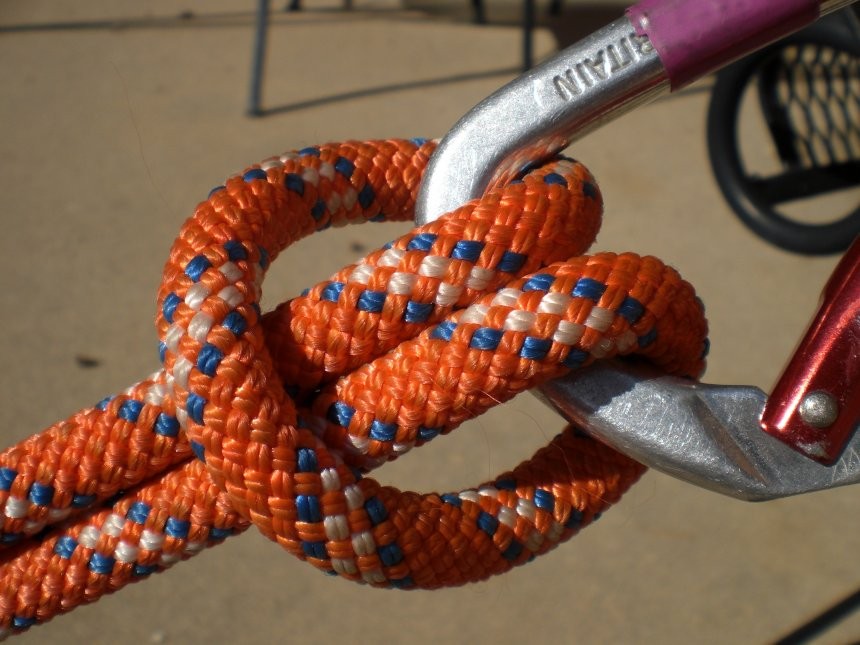
In addition, this knotting method is used to make swings, hang bundles of firewood, erect flagpoles, tie elastic bands, decorate with crochet, or make bracelets with string...

8. Weaver's knot (sheet bend, becket bend, weaver's knot and weaver's hitch)
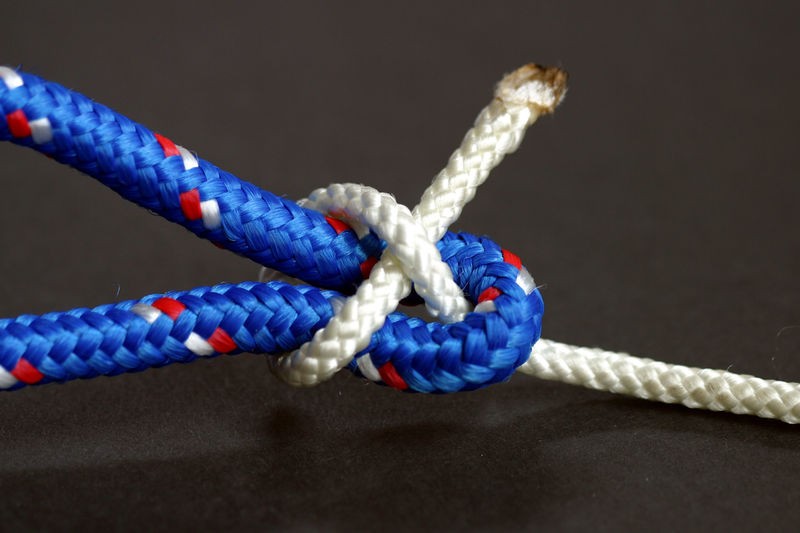
This tying method is somewhat similar to the single chair tying method. They are used when tying two pieces of rope with different cross-sections, used in connecting ropes when setting up tents, weaving nets, etc.
Double weaver's knot:
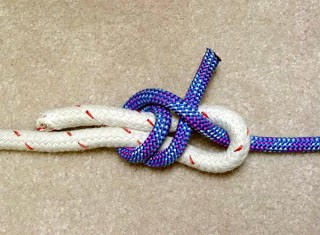
9. Double seat button (Bowline on a bight)
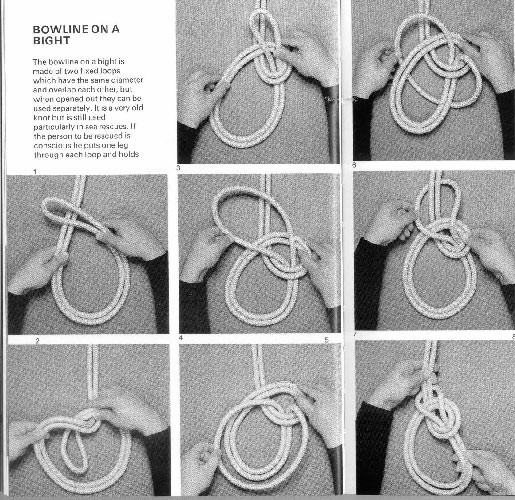
The double chair knot also creates a fixed loop in the middle of the rope. The advantage of this knot is that you don't have to worry about the item slipping off when tied, and it's very easy to untie.
This method can be used to create a toe hold in the middle of the rope or as a safety seat in rescue, more convenient and comfortable than a single seat knot. One loop can be used for each thigh and the upper part can be worn across the chest for safety.
10. Sheepshank knot
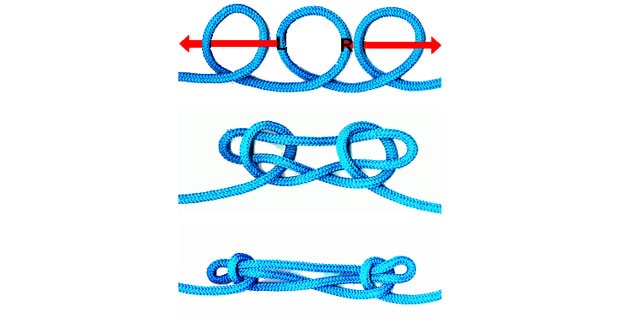
This type of knot is used to shorten a piece of rope or to tie off the excess rope.
This method can be used when you want to shorten a loose section of rope without having to cut it. It can also be used when tying to trailers or sailboats.
11. Taut Line Hitch
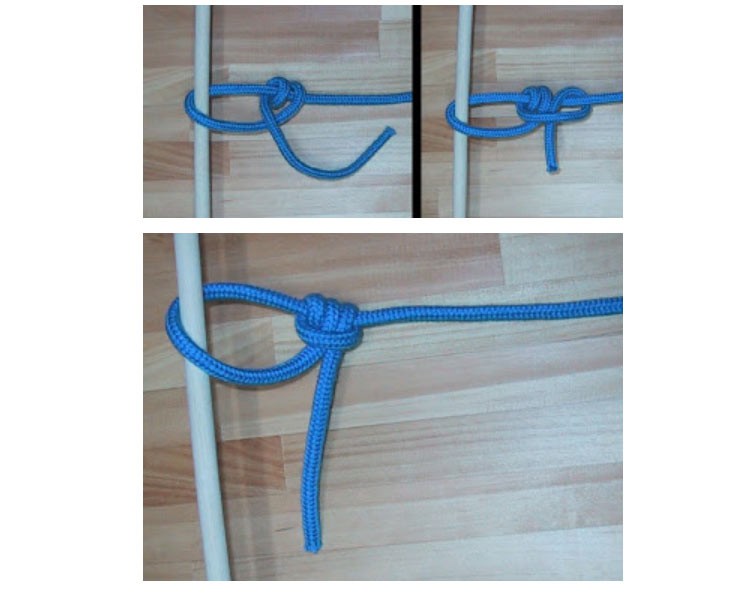
This knot tying method allows you to adjust the length of the string. You can use short pieces of string to tie knots using this method.
Note : the more loops the wire has, the more friction it will create and the more secure it will be, but the maximum should not exceed 10 loops.
12. Timber hitch
Used to tie rope to stakes, this knot is strong and relatively easy to make and remove. It can also be the beginning of an X-shaped tree knot.

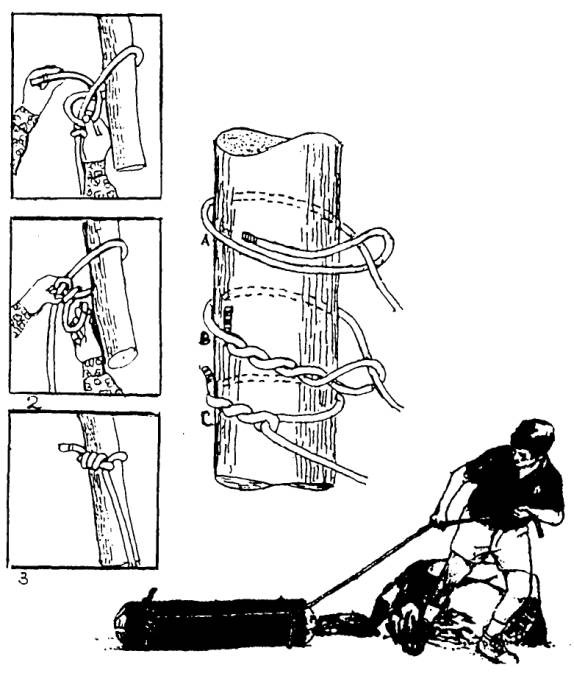
13. Trucker's hitch knot
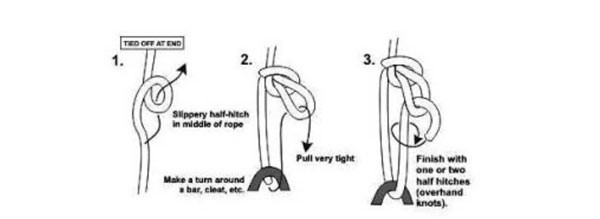
Used to increase or decrease the rope. The method is to use a noose knot in the middle of the rope to create a loop (can be replaced with a beak knot), anchor one end and hook the other end to another anchor end, thread the second anchor end into the loop just created and pull the noose towards you, ending with a single knot.
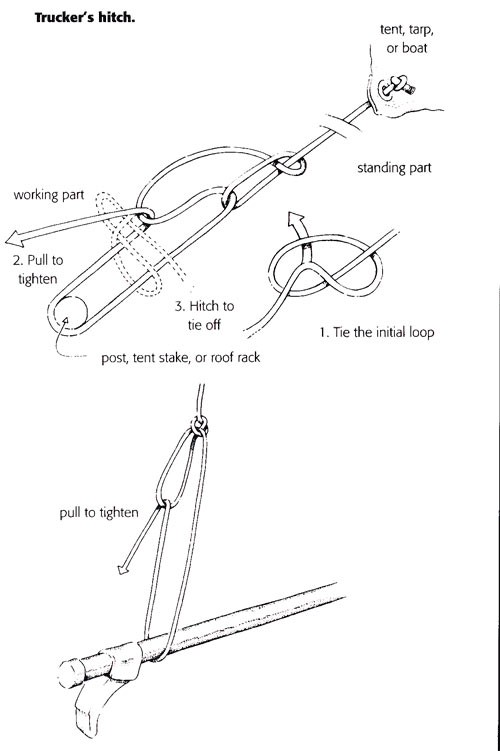
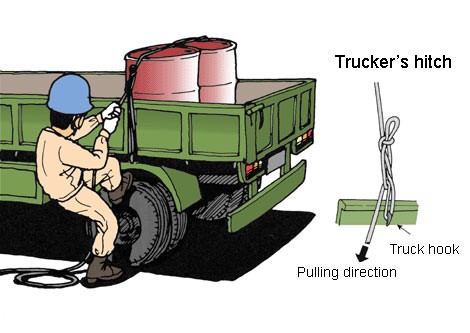
14. One round two locks
Used to lock the anchor rope knots.
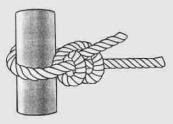
In addition to the above tying methods, below are some other tying methods you can refer to and apply.
Applications used to pull logs, hang hammocks or make clotheslines.
Some other tying methods you can refer to:
Circle fishing

Anchor Hitch

Angler Loop

Eye Splice

Angler

Reef
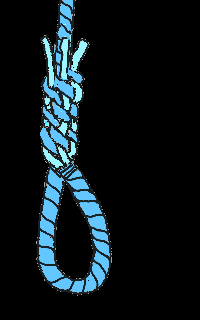
Hope the above article will be useful for you to apply them in life.
Diet is important to our health. Yet most of our meals are lacking in these six important nutrients.
At first glance, AirPods look just like any other true wireless earbuds. But that all changed when a few little-known features were discovered.
In this article, we will guide you how to regain access to your hard drive when it fails. Let's follow along!
Dental floss is a common tool for cleaning teeth, however, not everyone knows how to use it properly. Below are instructions on how to use dental floss to clean teeth effectively.
Building muscle takes time and the right training, but its something anyone can do. Heres how to build muscle, according to experts.
In addition to regular exercise and not smoking, diet is one of the best ways to protect your heart. Here are the best diets for heart health.
The third trimester is often the most difficult time to sleep during pregnancy. Here are some ways to treat insomnia in the third trimester.
There are many ways to lose weight without changing anything in your diet. Here are some scientifically proven automatic weight loss or calorie-burning methods that anyone can use.
Apple has introduced iOS 26 – a major update with a brand new frosted glass design, smarter experiences, and improvements to familiar apps.
Yoga can provide many health benefits, including better sleep. Because yoga can be relaxing and restorative, its a great way to beat insomnia after a busy day.
The flower of the other shore is a unique flower, carrying many unique meanings. So what is the flower of the other shore, is the flower of the other shore real, what is the meaning and legend of the flower of the other shore?
Craving for snacks but afraid of gaining weight? Dont worry, lets explore together many types of weight loss snacks that are high in fiber, low in calories without making you try to starve yourself.
Prioritizing a consistent sleep schedule and evening routine can help improve the quality of your sleep. Heres what you need to know to stop tossing and turning at night.
Adding a printer to Windows 10 is simple, although the process for wired devices will be different than for wireless devices.
You want to have a beautiful, shiny, healthy nail quickly. The simple tips for beautiful nails below will be useful for you.


